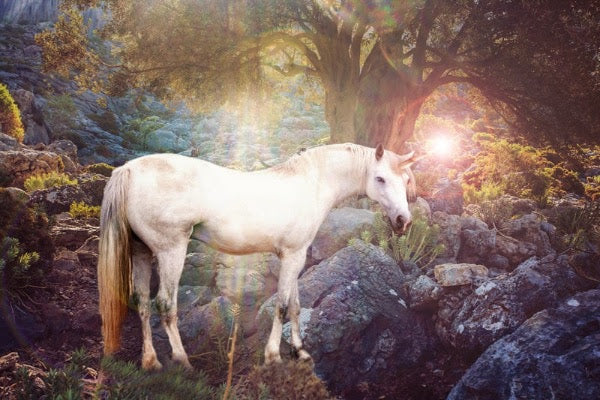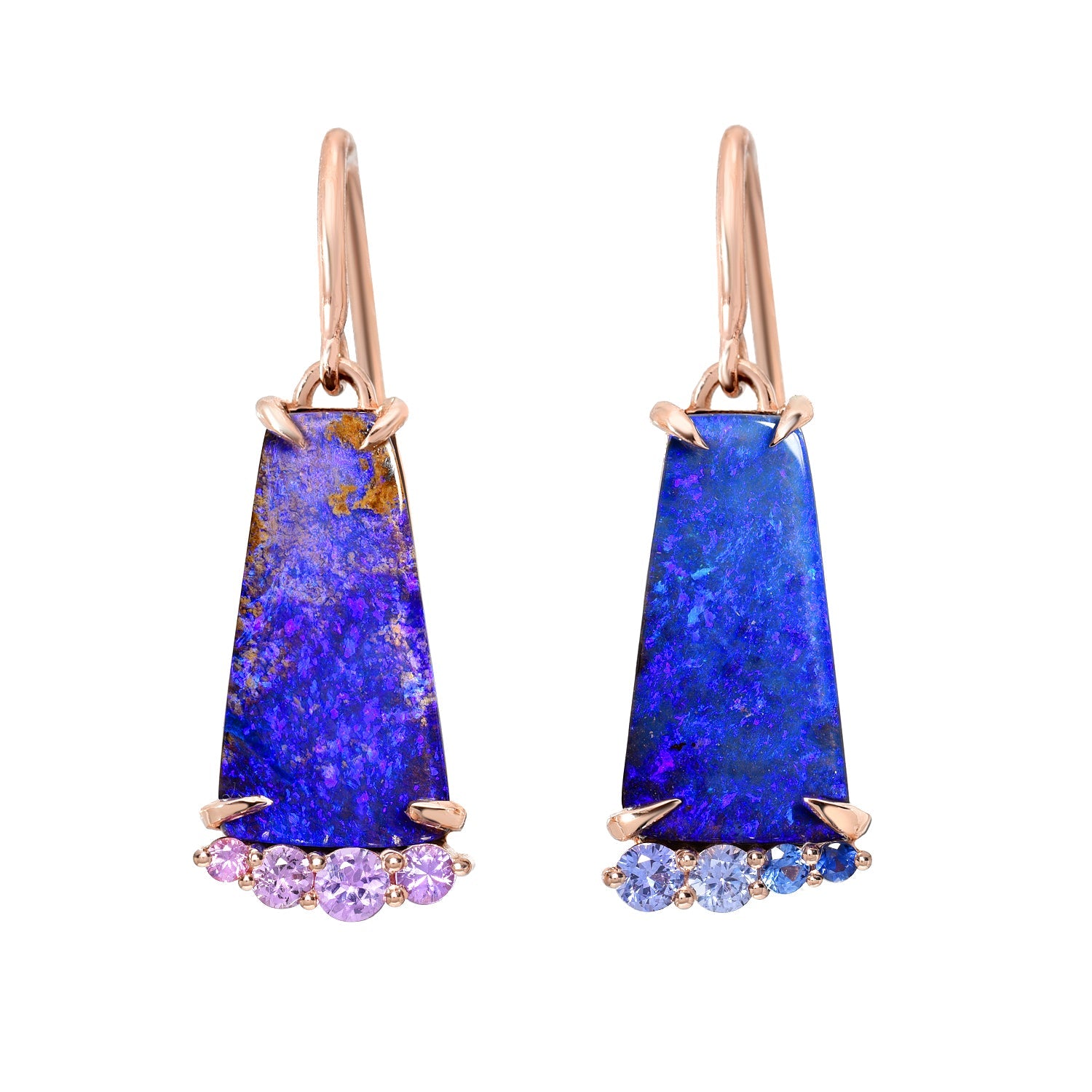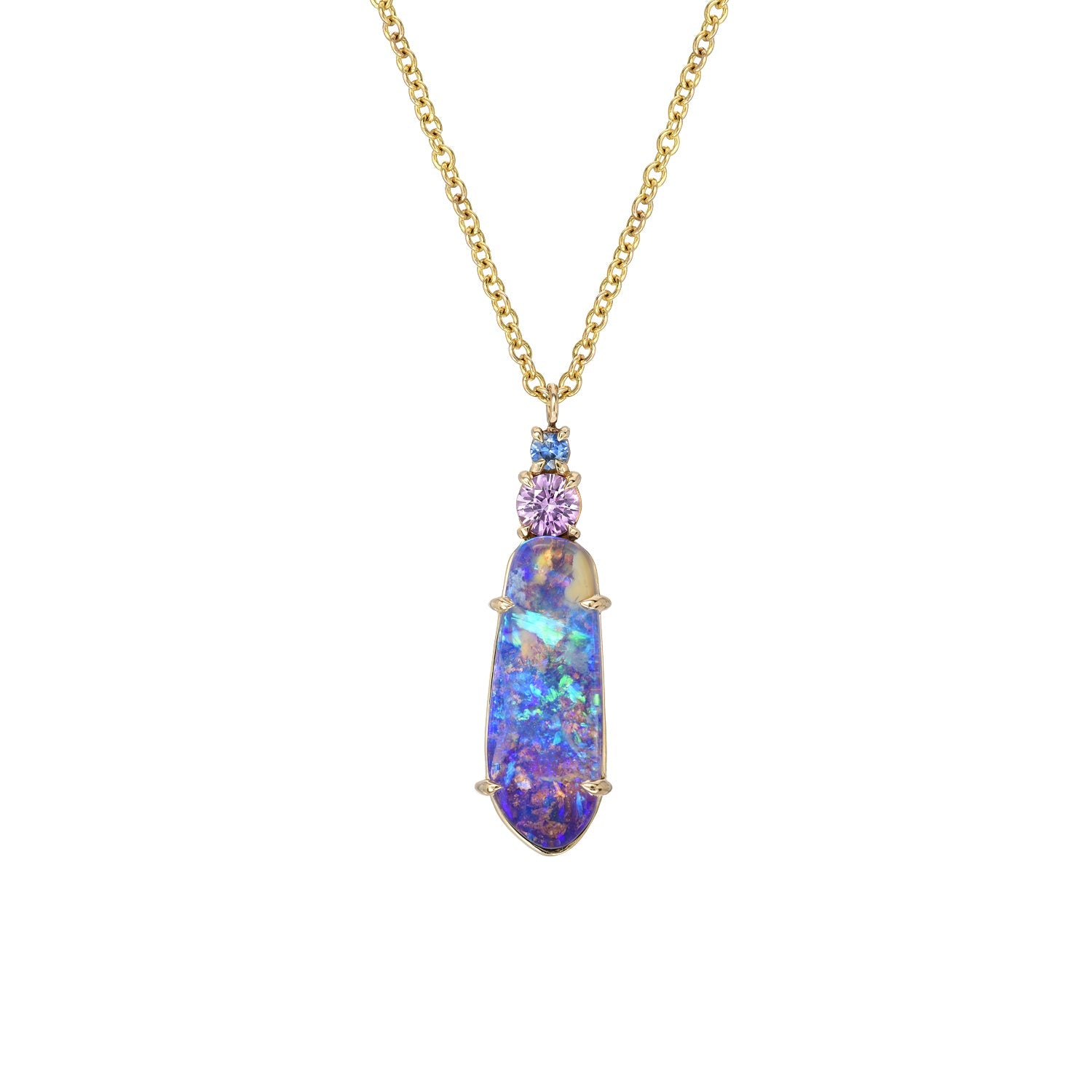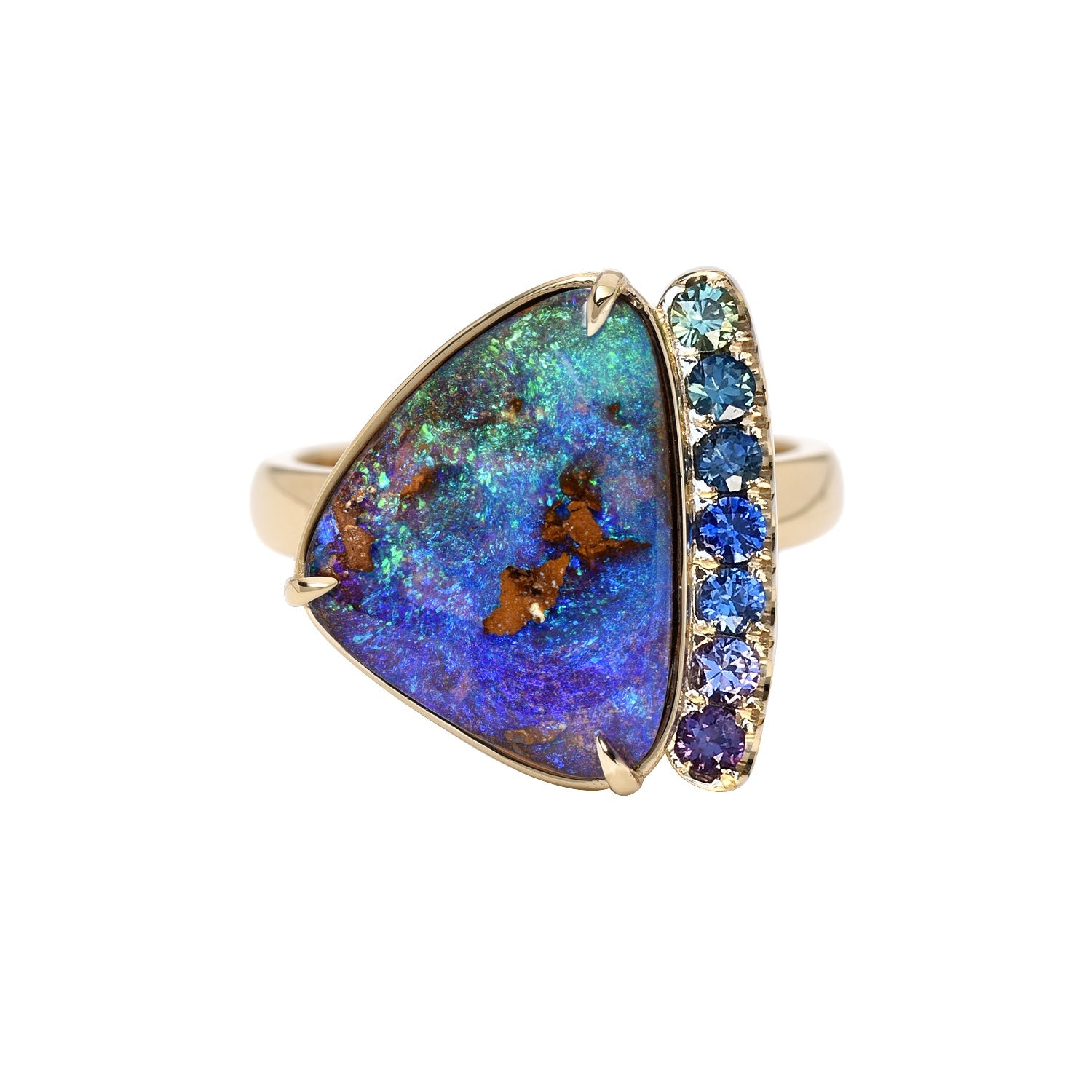
Sometimes Magic Lies in the Beauty of Nature Sitting Right Before Us
nicole gluckmanShare
With a unique opal pendant featured in each necklace from our Unicorn Tear series, we find the name rather fitting. After all, we can’t think of a creature quite as rare and magical as a unicorn.
Although we know that unicorns aren’t real, it wasn’t until rather recently in human history that their official existence was annulled. Lore surrounding the mythical creature had long been circulated through art, decor, folklore, religious teachings, and even through natural history catalogs, where they were depicted as powerful, wise, and solitary beasts throughout Europe and Asia.
Because they were also believed to possess curative powers, including the ability to heal sicknesses and prevent aging, their horns were coveted and eventually became symbols for apothecaries. If you look closely at the image below, you’ll notice that the horn is long, white, and spiraled — in other words, it probably looks like every unicorn horn you’ve seen in children’s fairy tale book illustrations. And there’s a reason why.

During the Medieval Ages, European merchants began trading narwhal tusks — likely collected from the Baltic Sea — passing them off as unicorn horns to unsuspecting believers willing to pay the price to own one, or even a piece of one. Among the unicorn horn’s touted “magical” properties was the ability to neutralize poison. For this reason, some converted them into cups. Even Queen Elizabeth I is believed to have fallen victim to the horn ruse, once investing in a 10,000-pound unicorn horn (aka narwhal tooth) — the 1500s cost equivalent of a castle. These tusks quickly became popular and, well, the rest is history.
Interestingly, before the popularization of narwhal tusks, unicorn horns were described to be of varying colors, shapes, and sizes. During his 14th-century voyages, Italian explorer Marco Polo described unicorns as “very ugly brutes” not much smaller than elephants and with a “single large, black horn in the middle of the forehead.” What he was probably describing was a rhinoceros, like those we touched on before.
As fascinated as we are by unicorn history and lore, we don’t condone the detrimental treatment of animals — especially knowing how vital the tusks of narwhals are to their existence. Once considered largely ornamental, today, we know that narwhal tusks are actually enlarged teeth that typically grow from the left canines, helping these mesmerizing animals sense changes in their environment, like water pressure, temperature, and chemicals released by potential mates. It’s mostly males that grow these one-of-a-kind straight horns (up to 11 feet long!) but some, including the rare female, can grow two.

And rare is something we instinctively gravitate toward, so it was only natural for us to fall in love when we laid eyes upon the truly distinct Black Opal in our Unicorn Tear Necklace No. 21 featuring a scene that’s entirely unique, yet still feels familiar to us. Discover your own magical meaning behind the dark swirling stone in this one-of-a-kind treasure.




